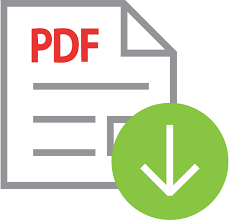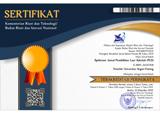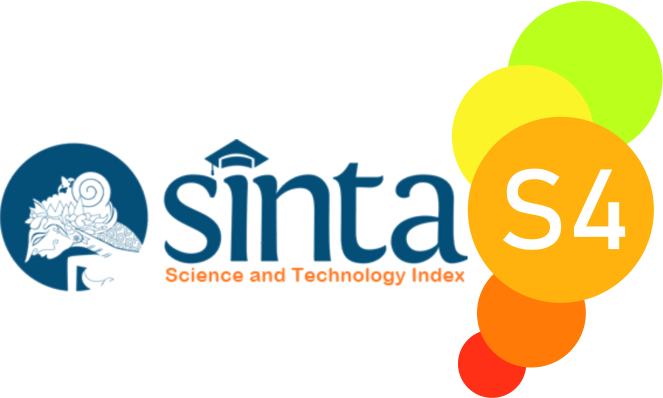Teaching The Indonesian Language As A Heritage Language For Diaspora Children
 ), Fendy Yogha Pratama(2), Fatah Nasikh Aryawan(3),
), Fendy Yogha Pratama(2), Fatah Nasikh Aryawan(3), (1) Politeknik Negeri Malang
(2) Universitas Sebelas Maret
(3) Dinas Pendidikan Provinsi Jawa Timur
 Corresponding Author
Corresponding Author
DOI : https://doi.org/10.24036/spektrumpls.v10i2.117419
Full Text:
 Language : en
Language : en
Abstract
Indonesian diaspora children have different characteristics compared to foreign students in general. They have acquired Indonesian naturally in their families. This background makes them included in the category of learners of Indonesian as a heritage language. The teaching of Indonesian that is done to them also has special characteristics. Therefore, this study specifically focuses on the characteristics of teaching Indonesian as a heritage language for diaspora children by using a qualitative approach and descriptive analysis. The data obtained through in-depth interviews with three teachers were then codified and analyzed. Based on the results of the analysis, it was found that the teaching in the Indonesian language as a heritage language class for these children has four characteristics. First, the teaching uses the total physical response (TPR) method. Second, it focuses on teaching daily vocabulary. Third, it focuses on teaching daily language skills. Fourth, teaching is assisted by the role of parents. Suggestions and recommendations from the results of this study are intended for Indonesian language teachers and researchers. Researchers should research more about the role of parents in learning Indonesian for diaspora children in the family. For Indonesian language teachers, it is recommended to focus on teaching daily vocabulary in everyday contexts using the TPR method.
Keywords: heritage language, young learners, Indonesian diaspora, Indonesian language teachingReferences
Asher., J. (1988). Learning Another Language Guide- Book. Los Gatos, Calif: Sky Oaks Production
Cameron, L. (2001). Teaching Languages to Young Learners. Cambbridge University Press.
Crain, W. (2014). Theories of development : concepts and applications (Sixth). Prentice Hall.
Elhawari, R. (2019). Teaching Arabic as a Foreign Language. In Teaching Arabic as a Foreign Language. Routledge. https://doi.org/10.5117/9789463720601
Extra, G., & Kutlay, Y. (2002). Language diversity in multicultural Europe: Comparative perspectives on immigrant minority languages at home and at school.
Kelleher, A. (2010). What is a heritage language program? Heritage Briefs Collection. https://www.cal.org/heritage/pdfs/what-is-a-heritage-language-program.pdf
Kagan, O., & Dillon, K. (2016). Issues in Heritage Language Learning in the United States. In Second and Foreign Language Education (pp. 1–18). Springer International Publishing. https://doi.org/10.1007/978-3-319-02323-6_3-1
Meisel, J. M. (2013). Heritage language learners: Unprecedented opportunities for the study of grammars and their development? Theoretical Linguistics, 39(3–4), 225–236. https://doi.org/10.1515/tl-2013-0014
Montrul, S. (2010, March). Current issues in heritage language acquisition. Annual Review of Applied Linguistics.
Moon, J. (2000). Children Learning English. Macmillan Education.
Pires, A., & Rothman, J. (2009). Disentangling sources of incomplete acquisition: An explanation for competence divergence across heritage grammars. International Journal of Bilingualism, 13(2), 211–238. https://doi.org/10.1177/1367006909339806
Polinsky, M., & Kagan, O. (2007). Heritage Languages: In the ‘Wild’ and in the Classroom. Language and Linguistics Compass, 1(5), 368–395. https://doi.org/10.1111/j.1749-818X.2007.00022.x
Schumann, J. H. (1975). Affective Factors and the Problem of Age in Second Language Acquisition. Language Learning, 25(2), 209–235. https://doi.org/10.1111/j.1467-1770.1975.tb00242.x
Schwarzer, D., & Petrón, M. (2005). Heritage language instruction at the college level: Reality and possibilities. Foreign Language Annals, 38(4), 568–578. https://doi.org/10.1111/j.1944-9720.2005.tb02523.x
Sook, J. (2002). The korean language in america: The role of cultural identity in heritage language learning. Language, Culture and Curriculum, 15(2), 117–133.
Tse, L. (2001). Resisting and Reversing Language among U . S . Native Biliterates. Harvard Educational Review, 71(4), 676–709.
Xiao, Y., & Wong, K. F. (2014). Exploring Heritage Language Anxiety: A Study of Chinese Heritage Language Learners. The Modern Language Journal, 98(2), 589–611.
Yamada, J., Takatsuka, S., Kotake, N., & Kurusu, J. (1980). On the Optimum Age for Teaching Foreign Vocabulary to Children. IRAL. International Review of Applied Linguistics in Language Teaching Lund, 18(3).
 Article Metrics
Article Metrics
 Abstract Views : 479 times
Abstract Views : 479 times
 PDF Downloaded : 156 times
PDF Downloaded : 156 times
Refbacks
- There are currently no refbacks.

This work is licensed under a Creative Commons Attribution-NonCommercial 4.0 International License.



